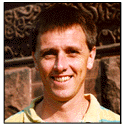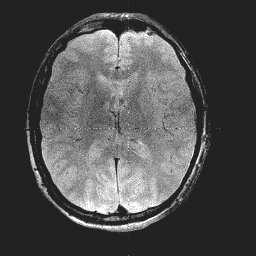

A member of Carleton's Physics and Astronomy Department since
1999.
1981-85 Stanford University (Stanford, California, U.S.A.) Bachelor
of Science in Physics
PREVIOUS POSITIONS:
1991-92 Research Fellow, Department of Physics, University of Auckland, Auckland, New Zealand
1992-94 Research Associate, School of Physics and Astronomy, University of Minnesota, Minneapolis, Minnesota, U.S.A.
1994 Research Fellow, Department of Physics, University of Auckland, Auckland, New Zealand
1994-96 Lecturer, Department of Physics, University of Auckland, Auckland, New Zealand
1998 Visiting Associate Professor, Department of Radiology, University of Minnesota
1996-1999 Senior Lecturer, Department of Physics, University of
Auckland, Auckland, New Zealand
2005-2006 Visiting Scientist, European Gravitational Observatory,
Virgo Interferometer, Cascina, Pisa, Italy
2006-2009, Chair, Physics and Astronomy, Carleton College
2012-2013, Visiting Scientist, Laboratoire de l'Accélérateur Linéaire, Orsay, France
Conference Publications, Technical Reports and Other Publications
Papers by Carleton students under Nelson Christensen's supervision
RESEARCH INTERESTS: My PhD research at M.I.T. was on the experimental development of laser interferometric gravitational radiation detectors, with an emphasis of using these antennas to measure cosmologically produced radiation. Since completing my PhD I have done research in the following areas:
Gravitational Radiation and Cosmology: Member of the LIGO
Scientific Collaboration. Detector characterization for LIGO; studies
of noise correlated with interferometer output, and the development of
vetoes for binary inspiral search. Studied issues concerning the
alignment of laser interferometric gravitational radiation detectors,
with an emphasis on using these antennas to measure cosmologically
produced radiation. I have also recently investigated the application
of Bayesian statistical techniques to gravitation radiation data
analysis. Sample MCMC code for binary inspiral parameter estimation
may be found here, while a Fortran program
for a Metropolis-Hastings MCMC for cosmological parameter estimation
from cosmic microwave background measurements can be found here. Also developing an MCMC code for pulsar
searches. LIGO research is funded through National Science Foundation
grants PHY-02444357, PHY-0071327, PHY-0553422, PHY-0854790, PHY-1204371, PHY-1505373 (Nelson
Christensen PI), and PHY-0938825 (Nelson Christensen Co-PI). Additional gravitational wave
research funding from the Royal Society of New Zealand Marsden Fund (Nelson Christensen, Associate Investigator).
Spent the 2005-06 academic year at the European
Gravitational Observatory, working on the French-Italian
gravitational wave interferometer, Virgo; this research was
partically funded by a Fulbright grant.
Medical Imaging/NMR and PET: Research on the design and development of a positron emission tomography (PET) scanner that operates within a magnetic resonance imaging (MRI) device, thereby allowing simultaneous imaging by the two different scanners. Work is conducted in collaboration with Prof. B. Hammer (University of Minnesota). Published work displays our demonstration of improved resolution for PET operated in large magnetic fields. Recent work concentrates on studies (Monte Carlo and experimental) on the coupling of small scintillator crystals to fiber optic bundles for photodetection meters away from the constrained and inhospitable environment of an MRI magnet bore.
Atom Trapping: My primary research activity at the University of Auckland was in directing the Atom Trapping and Cooling Laboratory. Three pairs of counterpropagating laser beams and an inhomogeneous magnetic field confine cesium atoms, and cool them to below 10 micro-Kelvin; the device is called a magneto optic trap (MOT). We experimentally and theoretically explored the transition from classical to quantum domains via studies of quantum chaotic effects on atomic motion. Numerous quantum chaos and decoherence experiments have been published. This research was funded by a grant from the Royal Society of New Zealand Marsden Fund
High Energy Physics: Detector development and construction for an experiment at Brookhaven National Laboratory (BNL), and the Superconducting Super-Collider (now terminated). Collaborator on an experiment at BNL (EVA Collaboration, E850, 25 members) investigating in elastic proton-proton scattering (large angle and momentum transfer), within nuclei. My work included detector development, construction and maintenance, plus data analysis. Supervised the construction of all the scintillator detectors used in experiment. Also designed, constructed and installed the inner most cylindrical straw tube proportional counter array. Work with the Solenoidal Detector Collaboration at the SSC involved design and tests of very large scintillator counters for the outer muon detection system.
Laser Physics Non-Linear Optics: Studies of noise properties of mode locked argon ion and krypton lasers. Non-linear effects of high power pulses in optical fibers, specifically modulation instability.

Independent Studies: Projects will considered in cosmology, general relativity, and medical physics. Recent general relativity project students: Michael Coughlin, Atticus Christensen, Adam Libson, Emily Petroff, Ezra Tucker, Sarah Vigeland.